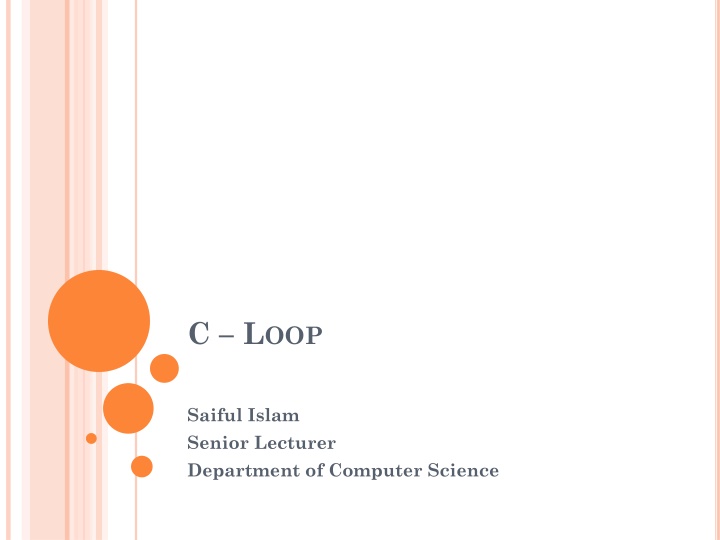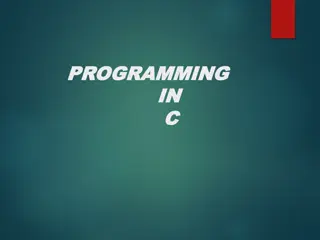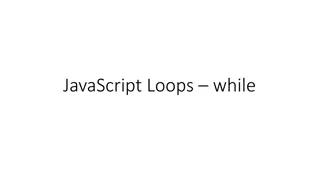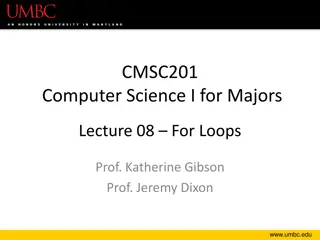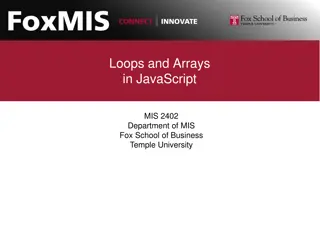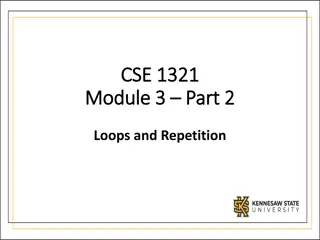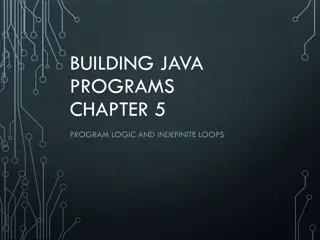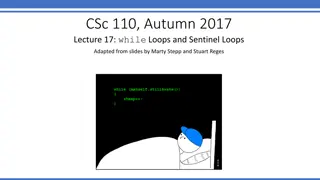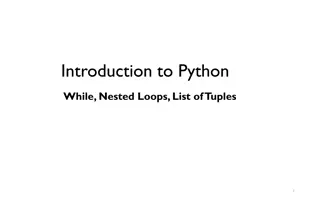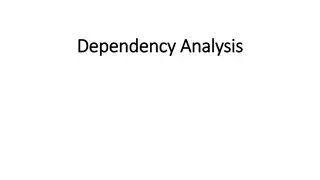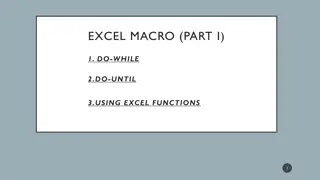C Programming Loops
C Programming Loops enable the execution of code multiple times with different types of loops like for, while, do while, and nested loops. Learn the syntax and flow control of for loops, while loops, and explore code examples.
Download Presentation

Please find below an Image/Link to download the presentation.
The content on the website is provided AS IS for your information and personal use only. It may not be sold, licensed, or shared on other websites without obtaining consent from the author.If you encounter any issues during the download, it is possible that the publisher has removed the file from their server.
You are allowed to download the files provided on this website for personal or commercial use, subject to the condition that they are used lawfully. All files are the property of their respective owners.
The content on the website is provided AS IS for your information and personal use only. It may not be sold, licensed, or shared on other websites without obtaining consent from the author.
E N D
Presentation Transcript
C LOOP Saiful Islam Senior Lecturer Department of Computer Science
C LOOP ? There may be a situation, when you need to execute a block of code several number of times. statements sequentially: statement in a function is executed first, followed by the second, and so on. ? A loop statement allows us to execute a statement or group of statements multiple times and following is the general form of a loop statement in most of the languages: In general, executed The are first programming
TYPES OF LOOP C programming language provides the following types of loop to handle looping requirements. Statement Description Execute a sequence of statements multiple times and abbreviates the code that manages the loop variable. 1. for loop 2. while loop Repeats a statement or group of statements while a given condition is true. It tests the condition before executing the loop body. 3. do...while loop Like a while statement, except that it tests the condition at the end of the loop body You can use one or more loop inside any another while, for or do..while loop. 4. nested loop
FOR LOOP ? A for loop is a repetition control structure that allows you to efficiently write a loop that needs to execute a specific number of times. ? Syntax:
FLOW OF CONTROL IN A FOR LOOP ? The init step is executed first, and only once. This step allows you to declare and initialize any loop control variables. You are not required to put a statement here, as long as a semicolon appears. ? Next, the condition is evaluated. If it is true, the body of the loop is executed. If it is false, the body of the loop does not execute and flow of control jumps to the next statement just after the for loop. ? After the body of the for loop executes, the flow of control jumps back up to the increment statement. This statement allows you to update any loop control variables. This statement can be left blank, as long as a semicolon appears after the condition. ? The condition is now evaluated again. If it is true, the loop executes and the process repeats itself (body of loop, then increment step, and then again condition). After the condition becomes false, the for loop terminates.
CODE EXAMPLE Output:
2. WHILE LOOP ? A while loop statement repeatedly executes a target statement as long as a given condition is true. ? Syntax: ? Here, statement(s) may be a single statement or a block of statements. ? The condition may be any expression, and true is any nonzero value. The loop iterates while the condition is true. ? When the condition becomes false, program control passes to the line immediately following the loop.
FLOW DIAGRAM: WHILE LOOP Here, key point of the while loop is that the loop might not ever run. When the condition is tested and the result is false, the loop body will be skipped and the first statement after the while loop will be executed.
CODE EXAMPLE : IF ELSE Output:
3. DO..WHILE LOOP ? Unlike for and while loops, which test the loop condition at the top of the loop, the do...while loop in checks its condition at the bottom of the loop. ? A do...while loop is similar to a while loop, except that a do...while loop is guaranteed to execute at least one time. ? Syntax: ? Notice that the conditional expression appears at the end of the loop, so the statement(s) in the loop execute once before the condition is tested. ? If the condition is true, the flow of control jumps back up to do, and the statement(s) in the loop execute again. This process repeats until the given condition becomes false.
CODE EXAMPLE: DO...WHILE Output:
NESTED LOOPS IN C ? It is allow to use one loop inside another loop. ? The syntax for a nested for loop statement ? The syntax for a nested while loop statement
NESTED LOOPS IN C ? The syntax for a nested do...while loop ? A final note on loop nesting is that you can put any type of loop inside of any other type of loop. For example, a for loop can be inside a while loop or vice versa.
LOOP CONTROL STATEMENTS: Loop control statements change execution from its normal sequence. C supports the following control statements. Control Statement Description break statement Terminates the loop or switch statement and transfers execution to the statement immediately following the loop or switch. continue statement Causes the loop to skip the remainder of its body and immediately retest its condition prior to reiterating.
BREAK STATEMENT ? The break statement in C programming language has the following two usages: When the break statement is encountered inside a loop, the loop is immediately terminated and program control resumes at the next statement following the loop. It can be used to terminate a case in the switch statement (we already saw). ? If you are using nested loops (i.e., one loop inside another loop), the break statement will stop the execution of the innermost loop and start executing the next line of code after the block. ? Syntax: break;
CONTINUE STATEMENT ? The continue statement works somewhat like the break statement. Instead of forcing termination, however, continue forces the next iteration of the loop to take place, skipping any code in between. ? For the for loop, continue statement causes the conditional test and increment portions of the loop to execute. For the while continue statement causes the program control passes to the conditional tests. ? Syntax: continue; and do...while loops,
CODE EXAMPLE: CONTINUE value of i: 0 value of i: 1 value of i: 2 value of i: 4 value of i: 5 Notice that 3 is not there!
